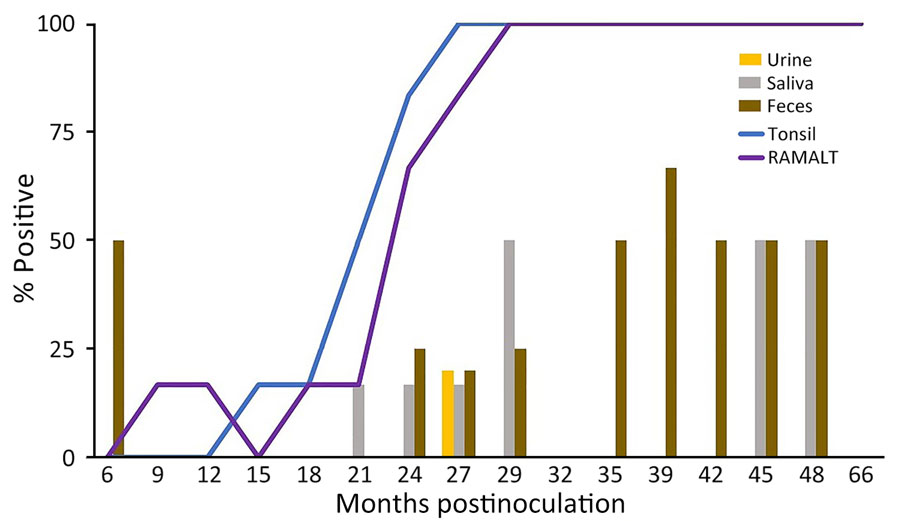Volume 30, Number 10—October 2024
Research
Temporal Characterization of Prion Shedding in Secreta of White-Tailed Deer in Longitudinal Study of Chronic Wasting Disease, United States
Figure 4

Figure 4. Percentage of prion-positive samples from white-tailed deer with chronic wasting disease that had prion protein genotypes 96GS or 103NT in study of prion shedding in secreta, United States. Tissue samples and secreta were collected from deer after exposure to low oral doses of chronic wasting disease–positive brain tissue or saliva. RAMALT, recto-anal mucosa-associated lymphoid tissue.
Page created: July 30, 2024
Page updated: September 24, 2024
Page reviewed: September 24, 2024
The conclusions, findings, and opinions expressed by authors contributing to this journal do not necessarily reflect the official position of the U.S. Department of Health and Human Services, the Public Health Service, the Centers for Disease Control and Prevention, or the authors' affiliated institutions. Use of trade names is for identification only and does not imply endorsement by any of the groups named above.